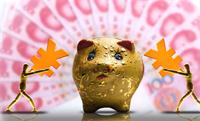经济L型走势(jīngjì L xíng zŏushì):L-shaped economic trend
(China Daily) Updated: 2016-05-10 07:35A recent People's Daily article on China's economy pointed out that from now on China's economic trend will be L-shaped recovery, that is to say the sharp decline in GDP and industrial output will be followed by a long period of flat but stable growth.
Since the beginning of this year, China's economic situation has remained fundamentally stable, as GDP growth in the first quarter was 6.7 percent, the employment situation has remained constant, and financial and economic risks have been controlled.
However, economic growth is still reliant on investment, and there has been a large-scale decline in investment by private enterprises. There are also risks stemming from the overcapacity in some industries and local government debts.
Some regions with an industrial structure dominated by low-end manufacturing face an economic downturn and unemployment, which may increase the social contradictions in these areas.
The article quoted authoritative sources in stressing that China's L-shaped economic trend will last for some time, and economic growth will not rebound to a high level. But the central government has confidence in China's economic prospects and will not use excessive investment or rapid credit expansion to stimulate growth.

I’ve lived in China for quite a considerable time including my graduate school years, travelled and worked in a few cities and still choose my destination taking into consideration the density of smog or PM2.5 particulate matter in the region.











